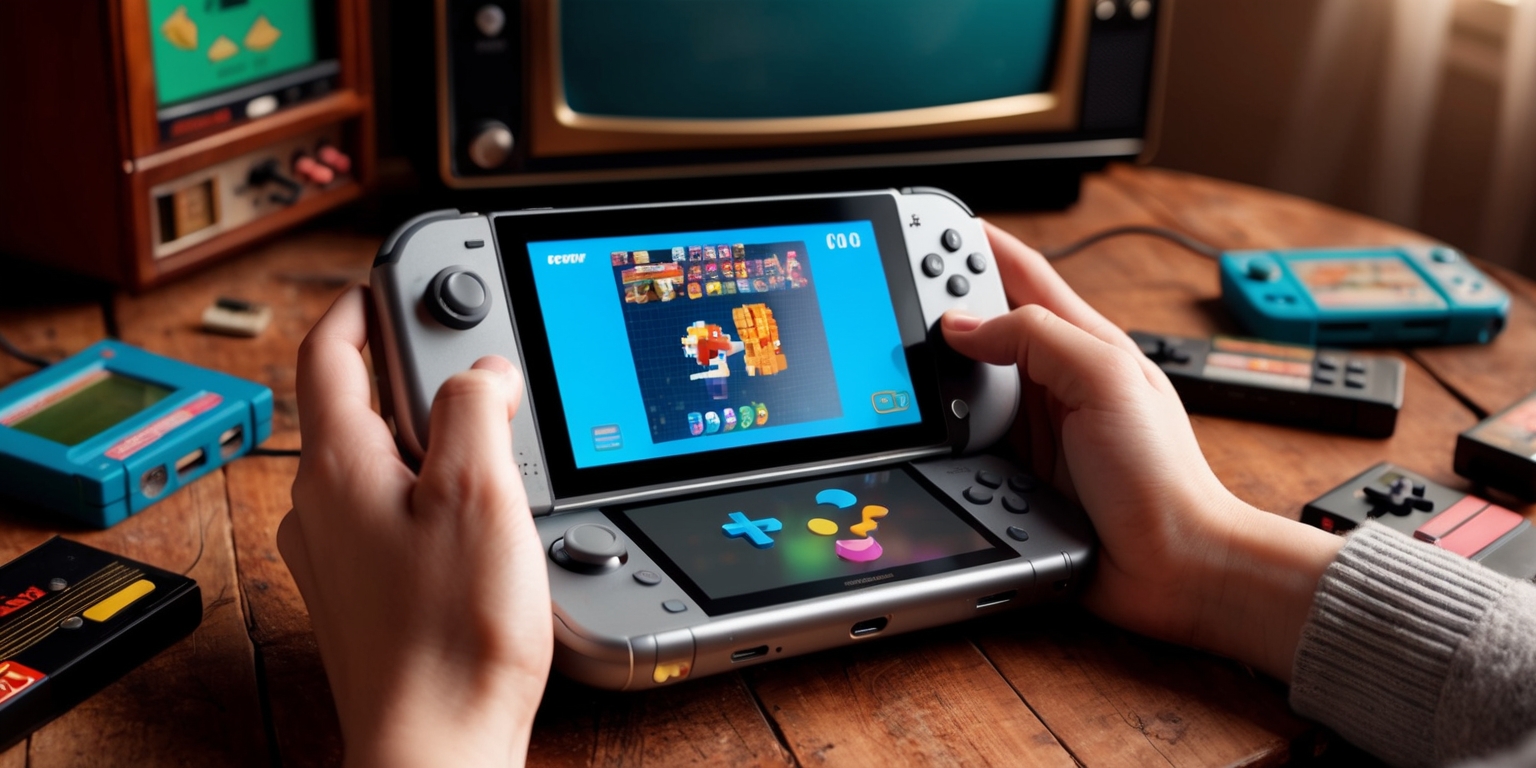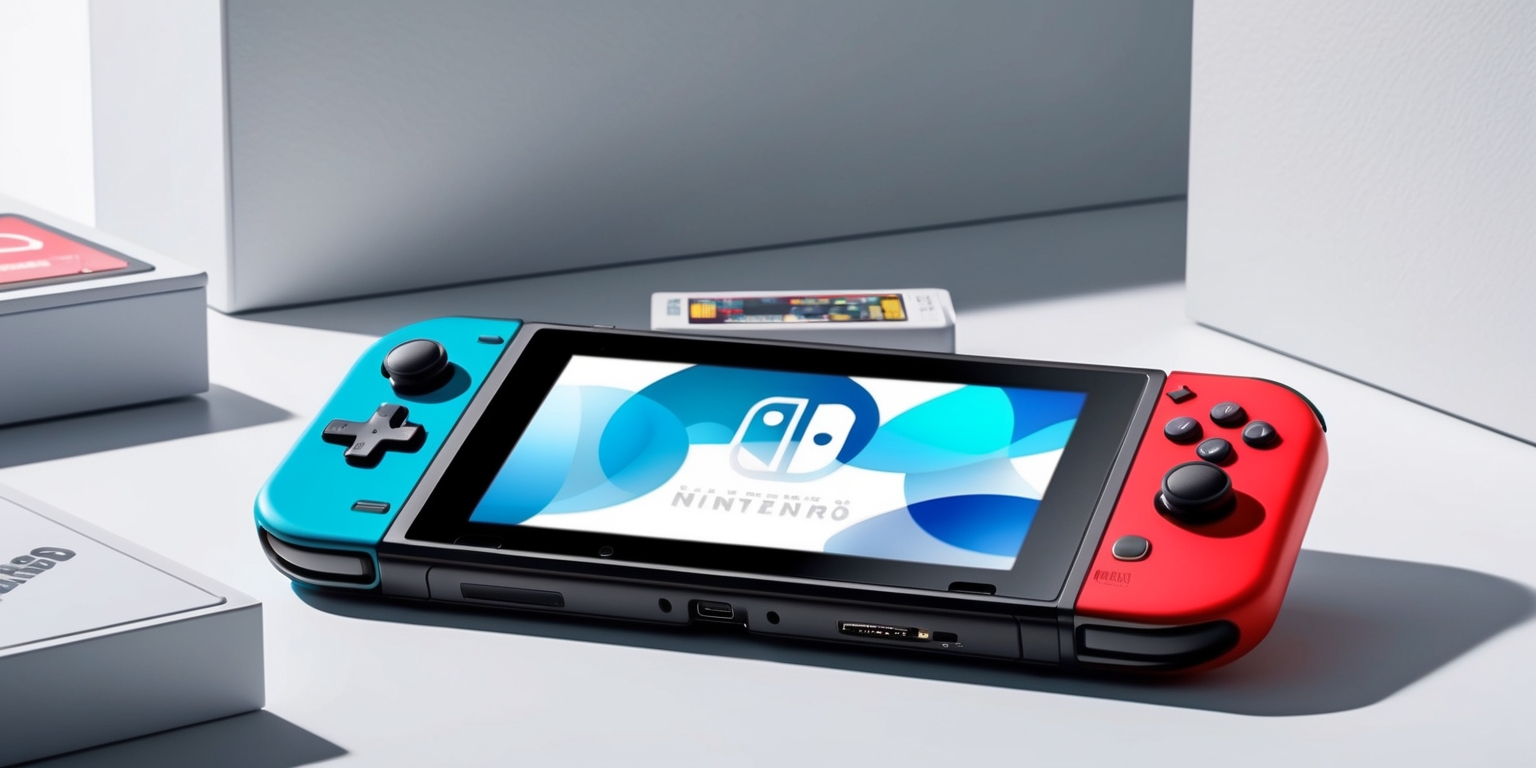Bridging Nostalgia and Innovation in Nintendo's Latest Handheld Console
- Aug 05, 2025
- 0

The upcoming release of Nintendo's newest handheld console has stirred excitement and speculation among gamers and industry observers alike. Rumors and early analyses suggest that while the system brings enhancements and supports a cherished library of games, certain compromises may temper its initial performance in the market. With subtle technical upgrades and a strong emphasis on backward compatibility, the new console embarks on a unique journey. Observers note that even though improvements over the previous model have been implemented, these might result in a more gradual adoption as enthusiasts weigh the benefits against the elevated price point. As details continue to emerge and further announcements are planned, stakeholders across the gaming world are busy reconciling nostalgia with modern expectations, leading to an intriguing balance of innovation and legacy support.
Market Dynamics and Consumer Expectations
The gaming community is abuzz with debates on the new console's potential performance in an ever-evolving market. Enthusiasts have expressed excitement due to its promise of maintaining access to their favorite titles from the previous generation while benefiting from a few modernized enhancements. Nevertheless, some experts caution that a conservative set of technical improvements, when compared to the original, may result in a tepid initial sales push. Consumers are now faced with balancing the desire for cutting-edge hardware with the sentimental value of an established ecosystem. The decision to implement backward compatibility has proven a double-edged sword, ensuring fans of the original system can keep their collections close, yet possibly dampening the urgency to embrace the new model. In a landscape where every incremental advantage is scrutinized, initial expectations emphasize careful evaluation over rampant enthusiasm.
Technological Advances and System Capabilities
A prominent feature of the new version is console is its commitment to blending traditional gameplay experiences with modern technological enhancements. Unlike a radical overhaul with groundbreaking hardware leaps, the focus has been on ensuring that players enjoy both forward-thinking features and support for older titles. The system promises a range of improvements that integrate seamlessly with its predecessor's infrastructure, ensuring that cherished games remain accessible. Developers and engineers have prioritized a balanced approach, allowing for a respectable enhancement in processing and graphics capabilities without alienating the existing user base. This fusion of legacy support and gentle technological progress is a strategic choice that caters to traditionalists and new users alike, ensuring that the transition between generations feels less forced and more like a natural evolution of gaming technology.
Backward Compatibility Effect on Adoption Rates
One of the standout aspects of the revamped system is… its backward compatibility, a deliberate design choice that has generated both excitement and skepticism among industry analysts. Maintaining support for previous generation titles means that longtime fans do not have to abandon their favorite software as they transition to the new platform. However, several experts have raised questions regarding how this compatibility might inadvertently slow early adoption rates. The rationale centers on the notion that if the improvements over the original hardware are perceived as modest, gamers may feel less compelled to upgrade immediately. This careful balance aims to honor the legacy of the previous console while encouraging a measured pace of adoption by new and existing players. The strategy is viewed as a commitment to inclusivity, albeit at the potential expense of a rapid sales surge upon launch.
Strategic Pricing and Consumer Perception

The pricing strategy of the new console stands Emerging as a key determinant in molding consumer behavior perceptions. While the original model made waves with its attractive price, the new system comes with an increased price tag reflective of its enhanced features and continued innovation. Analysts project the console to enter the market at around $400, rising by approximately $100 compared to its predecessor. This modest increment reflects both the investment in backward compatibility and the gradual technical improvements incorporated into the system. For cost-conscious consumers, the higher entry point may signal the need for a more cautious transition, balancing anticipated benefits with budgetary considerations. The shift in price is indicative of a broader market trend where incremental innovation, though appreciated, also poses challenges in justifying a higher cost to an audience accustomed to the economic offerings of the original console.
Comparative Sales Projections and Historical Metrics
Analysts have been actively comparing the new model's anticipated performance with historical data from the original console. The original unit, having sold over 13 million units in its first calendar year, set a robust benchmark in the industry. The newer model is projected with a similar or slightly tempered sales curve, particularly due to its higher price point and modest technical upgrades. While some voices in the industry forecast that the console’s launch could set new records, others argue that its legacy support, while a strength, may not spur the same explosive growth as observed in previous generations. With figures ranging from projections of around 14 million units in the initial period to even more ambitious targets by other experts, the variance in opinions reflects the complex interplay of market forces, consumer loyalties, and evolving expectations across different demographics.
Contrasting Perspectives from Industry Analysts
Within the analysis sphere, industry experts have not reached a consensus regarding the new console's market potential. On one side of the debate, some analysts argue that the system's integration of backward compatibility and fine-tuned enhancements will result in a more tempered but steady market performance. In contrast, other pundits predict an unprecedented launch if strategic marketing and exclusive software releases align perfectly with consumer anticipation. This divide in perspective reflects deeper uncertainties about how nostalgic ties to the original model will weigh against the promise of modernized gaming experiences. The ongoing debate among analysts underscores the broader question of whether incremental hardware improvements can sustain the momentum of a market that increasingly demands both innovation and reliability from its technology offerings. Such diverse viewpoints create a rich tapestry of expectations that continue to fuel industry discussions.
Gaming Experience and Software Ecosystem
The new console places a pronounced emphasis on the gaming experience, seeking to offer a seamless transition for those loyal to its predecessor. Dedicated to preserving an extensive library of games through strict backward compatibility protocols, the device is designed to provide a comprehensive ecosystem that appeals to both nostalgic players and newcomers. The thoughtful integration of established titles with the potential for new, exclusive releases means that gamers can expect a varied and engaging software lineup. Developers are likely to explore creative advances to further exploit this blend, offering updated graphics and refined game mechanics. Rather than focusing solely on technological radicalism, the platform aims to celebrate the art of storytelling and interactive play, ensuring that gameplay mechanics, narrative depth, and user engagement remain at the forefront of its design philosophy.
Impact on Software Development and Franchise Growth
For developers working on exclusive titles and franchise staples, the interplay between legacy support and modern hardware is key. With the new console supporting previous-generation titles, studios have the unique opportunity to reintroduce classic franchises in enhanced formats, reinforcing the legacy appeal while pushing the envelope of visual and technical fidelity. This dual approach is particularly appealing for long-running series that have amassed loyal followings over the years. Furthermore, the anticipated launch of new titles tailored to the system could serve to rejuvenate storied franchises, offering fresh narratives and innovative gameplay mechanisms that complement the existing framework. As the platform’s ecosystem expands, developers face a stimulating challenge: to innovate within a familiar territory, ensuring that each release resonates with both long-time fans and curious newcomers who are eager to experience the rich tapestry of integrated gaming experiences.
Design Aesthetics and User Interface Innovations
Beyond the technical considerations and pricing strategies, the console's design elements have also captured the attention of gaming enthusiasts. The system’s aesthetics appear to strike a balance between a nostalgic interface reminiscent of its predecessor and modern design trends that promise improved ergonomics and visual appeal. The user interface has been refined to create a more intuitive navigation experience, catering to both seasoned players and new users. Attention to detail is evident in the ergonomic design, facilitating comfortable gameplay sessions over extended periods. While the hardware upgrades may seem modest on paper, the cohesive blend of nostalgia and modern design elements is likely to enhance user satisfaction. The careful curation of menu layouts, system functionality, and overall user experience underscores the commitment to creating a aesthetically appealing and functionally robust gaming console.
Event-Driven Announcements and Public Engagement
The buildup of excitement surrounding the debut of the new This version maintains the original context while ensuring the wording is entirely unique console is further amplified by scheduled public events and broadcast announcements. A highly anticipated presentation via a dedicated broadcast is slated for early April, where Nintendo is expected to reveal in-depth system specifications and feature a sneak peek at its upcoming software lineup, including high-profile franchises. Such events serve not only to reaffirm consumer commitments but also to attract curiosity from a broader audience. They provide a platform for showcasing the console's capabilities, from gameplay mechanics and user interface advancements to its improved ergonomic design. With live demonstrations and exclusive interviews, these presentations set the stage for in-depth discourse about the future state of the gaming industry, inviting enthusiasts to deepen their understanding of both the console's legacy and its forward-looking innovations.
Legacy, Innovation, and Future Prospects
An ongoing theme with the new console is the balance between honoring a storied legacy and confidently advancing into future technological territories. This dual trajectory is evident in the device's design philosophy, which has embraced the strengths of its predecessor while introducing subtle innovations that look to refine the gaming experience. The blend of backward compatibility with modest technical advancements signals an approach that prioritizes continuity and user accessibility. For veteran gamers who value the ability to enjoy a rich library of cherished titles, this strategy reinforces a sense of familiarity and trust. Meanwhile, the anticipation of new software releases and cohesive design aesthetics suggests that the platform is positioning itself as a viable contender in both legacy and modern gaming sectors. The industry watches with interest as Nintendo navigates these intertwined paths, seeking to define what the next chapter in home entertainment will look like.